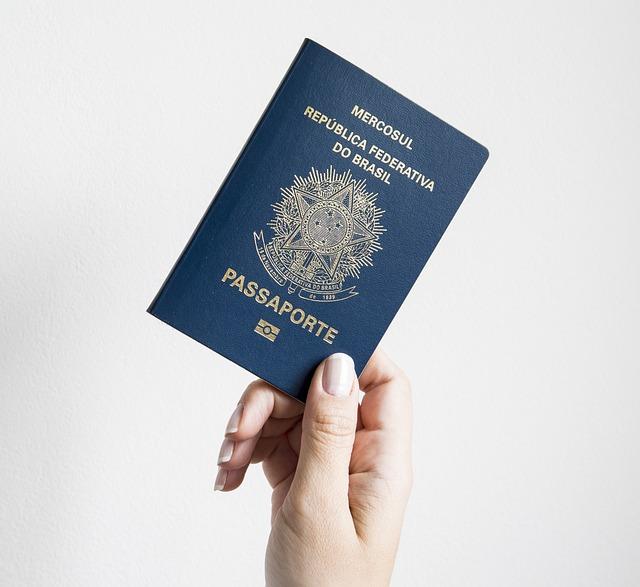In the tapestry of global migration, few narratives are as intricate as that of Pakistan. Nestled in South Asia, this nation has long been a crossroads of cultures, traditions, and aspirations, shaping the stories of millions who have sought new beginnings beyond its borders. As we embark on a journey to explore the evolving trends of immigration from Pakistan, we encounter a multifaceted landscape marked by both opportunities and challenges. From the bustling streets of Karachi to the quiet towns of the West, the motivations driving Pakistani emigrants are as diverse as the experiences they carry with them. This article delves into the historical context, current patterns, and the social, economic, and political factors influencing this complex phenomenon, illuminating the resilience of a people seeking to carve out their place in the world. Join us as we unravel the threads of Pakistan’s immigration story and examine the obstacles faced along the way, shedding light on a journey that is as compelling as it is essential.
Understanding the Historical Context of Immigration Patterns in Pakistan
Throughout history, immigration patterns within Pakistan have been shaped by a myriad of factors, prominently including socio-political instability, economic opportunities, and the effects of natural disasters. Major events, such as the partition in 1947, prompted a massive exchange of populations as millions fled across borders, altering the demographic landscape significantly. In subsequent decades, Afghanistan’s conflicts also spurred waves of Afghan refugees into Pakistan, further intertwining the two nations’ fates. This complex tapestry reflects not only the resilience of communities within Pakistan but also the broader regional dynamics that influence migration.
Beyond immediate historical events, long-standing socio-economic disparities have played a critical role in shaping immigration trends. For many Pakistanis, the pursuit of better educational opportunities and employment prospects abroad has been a compelling driver. Key migration destinations have included the Middle East, Europe, and North America, where the promise of a more stable and prosperous life acts as a beacon for those seeking refuge from the challenges within their homeland. The interplay of push and pull factors reveals the nuanced motivations behind these movements, underscoring a persistent quest for improved livelihoods and brighter futures.

Factors Driving Contemporary Migration: Economic, Social, and Political Dimensions
The landscape of migration is intricately woven with economic, social, and political threads that shape the decisions of individuals and families. In Pakistan, economic instability has catalyzed a surge in out-migration as many seek better opportunities abroad. Factors such as rising unemployment rates, inflation, and a limited job market compel skilled workers and graduates to look for employment in nations with robust economies. Moreover, the disparity in living standards and income levels between Pakistan and developed countries further motivates the youth to migrate, with dreams of enhanced quality of life. Key domains include:
- Global Job Markets: Access to international opportunities attracts skilled Pakistanis.
- Remittances: Financial support sent back home plays a vital role in local economies.
- Educational Prospects: A desire for higher education abroad also drives migration.
Social dynamics also play a crucial part; family ties and established communities abroad create informal networks that facilitate migration. The presence of Pakistani diaspora in countries like the UK, Canada, and the UAE provides both support and an impetus for others to join their families and friends, enriching the global Pakistani community. Furthermore, political factors cannot be overlooked; governmental instability, security concerns, and limited political freedoms push many to seek refuge or a new life elsewhere. The interplay of these elements leads to a complex migration puzzle, where:
- Safety Concerns: Political unrest can drive individuals to seek asylum.
- Cultural Openness: Acceptance in host countries encourages Pakistani communities.
- Policy Changes: Immigration laws in destination countries significantly impact migration patterns.
| Dimension | Impact on Migration |
|---|---|
| Economic | Job opportunities and higher income prospects abroad. |
| Social | Family connections and diasporic support networks. |
| Political | Instability and lack of freedoms lead to out-migration. |

Navigating Challenges: The Impact of Global Policies on Pakistani Migrants
As global policies shift in response to economic, political, and environmental factors, Pakistani migrants find themselves navigating an increasingly complex landscape. Immigration trends are influenced by a multitude of factors, including stringent visa requirements, fluctuating asylum laws, and changing labor market demands in host countries. These transformations often lead to uncertainty for potential migrants, compelling many to reassess their options. Pakistani families, especially those seeking better opportunities, face obstacles such as financial burdens from application processes and the emotional toll of long separations from loved ones, making the journey toward a prosperous future a daunting task.
Moreover, the impact of geopolitical tensions cannot be understated in shaping the experiences of Pakistani migrants. For instance, recent shifts in international relations have led to increased barriers for those seeking asylum or employment abroad. This situation forces many to rely on informal channels or precarious employment options, heightening their vulnerability. To better understand the implications of these challenges, consider the following table that highlights some key factors affecting migration from Pakistan:
| Challenge | Impact on Migrants |
|---|---|
| Stricter Visa Regulations | Limits access to job opportunities |
| Geopolitical Tensions | Creates uncertainty and fear |
| Changing Asylum Policies | Reduces safe harbor options |
| Economic Instability | Increases desperation to migrate |

Enhancing Opportunities: Strategic Recommendations for a Sustainable Future
To cultivate a sustainable future amidst changing immigration trends, stakeholders, including the Pakistani government, NGOs, and civil society, must adopt a multidimensional approach. This strategy should encompass economic empowerment, educational initiatives, and community integration programs. By investing in local industries and promoting entrepreneurship, the government can create job opportunities that not only retain talent but also attract overseas Pakistanis to contribute to their homeland. Additionally, enhancing educational systems by focusing on STEM fields and vocational training will equip the youth with skills necessary for both domestic and international markets.
Furthermore, fostering an inclusive environment is pivotal. By establishing policies that protect the rights of immigrants and refugees, facilitating access to essential services, and promoting cultural exchange programs, we can bridge the gap between communities. A significant recommendation is to assemble a task force that highlights best practices in immigrant integration based on successful models from other countries. This task force can serve as a vital resource in surveying local needs and developing tailored solutions, thereby nurturing a society where diversity is celebrated and contributes to economic and social growth.
Insights and Conclusions
As we conclude our exploration of immigration trends in Pakistan, it becomes clear that the journey is complex and multifaceted. The narratives of those who leave, those who stay, and the socio-economic dynamics at play reveal a tapestry of aspirations, challenges, and resilience.
While the allure of opportunities abroad continues to pull many, the factors driving migration—be it economic hardship, political instability, or the quest for better living conditions—remain deeply rooted in the realities of life in Pakistan. The government, civil society, and various stakeholders are called upon to engage in constructive dialogue and implement policies that address these challenges, ultimately fostering an environment where the potential of every Pakistani can be realized, both at home and abroad.
As we look to the future, the interplay between immigration and national development will undoubtedly shape the contours of Pakistan’s identity. By understanding the past and addressing present challenges, we can pave the way for a more hopeful narrative—one where migration is not simply an escape from hardship but a pathway to shared growth and mutual understanding. The journey of Pakistan, intertwined with the stories of its migrants, continues to unfold, reminding us that every departure carries with it a piece of home, and with each return, a promise of potential yet to be realized.



